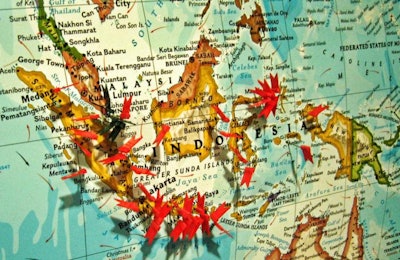
Indonesian poultry breeders gave away thousands of chickens for free this week to protest the government’s directive to cull 3 million chickens in an effort to boost falling prices, according to a Reuters report.
The Agriculture Ministry told chicken producers to cull 68-week-old chickens over a two-week period to July 9. Chicken prices throughout the country have fallen because the country produces more chicken than it consumes. In some places where prices are particularly low, farmers protested the government directive by giving away 5,800 chickens, saying prices have been depressed for 10 months.
Increased demand around the Muslim Eid al-Fitr holidays did not help prices as hoped, Reuters said.
According to the agriculture ministry, the average price of live birds in Indonesia was IDR20,216 ($1.43) per kilogram on Tuesday, compared with a government floor price of IDR18,000 per kilogram. Farmers in Yogyakarta said they had to sell their chickens for IDR7,000. Other farmers have resorted to selling their chickens on the roadside rather than to distributors in the hopes of selling them for a higher price, the Jakarta Post reported.
Indonesia produced 3.6 million tons of chicken meat last year, but only consumed 3.1 million tons, Agriculture Ministry data showed.
In 2015, Indonesia’s government ordered a similar culling of 6 million breeder chickens to scale back oversupply, and said it is prepared to order more culling in the future.
According to WATTAgNet.com, between 1993 and 2013, the Indonesian broiler industry was the sixth-fastest growing in the world. Estimates suggest that 60% of poultry meat in Indonesia now comes from industrialized farms, with 40% coming from small and independent farmers and, according to the Indonesian Public Poultry Association (PINSAR Indonesia), the number of independent farmers has fallen from 100,000 in 2008 to only 6,000 today. Similarly, there has been a shift in preference from native breeds to broilers.

















